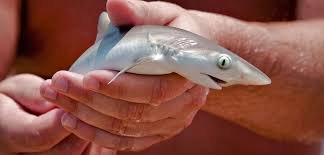
shark baby
Introduction to Baby Sharks
Sharks are some of the most fascinating and misunderstood creatures in the ocean. While adult sharks are often portrayed as fierce predators, baby sharks, also known as pups, are equally remarkable in their own right. From the moment they are born, baby sharks must fend for themselves, showcasing incredible instincts and survival abilities.
In this article, we dive into the world of baby sharks: their birth, development, behavior, diet, habitats, and the threats they face in the modern world. Whether you’re a marine biology enthusiast or simply curious about ocean life, understanding baby sharks offers valuable insight into the ocean’s complex ecosystem.
How Are Baby Sharks Born?
Unlike many fish species that lay thousands of eggs, sharks have diverse reproductive methods. Baby sharks may be born in one of three ways, depending on the species.
Types of shark birth:
- Oviparous (Egg-laying): Some sharks lay eggs in protective cases, often called “mermaid’s purses“. These are usually attached to underwater vegetation or rocks until the baby hatches. Example species: Horn sharks, Catsharks.
- Viviparous (Live birth): Similar to mammals, these sharks give birth to live young, which are nourished through a placenta-like structure. Example species: Bull sharks, Lemon sharks.
- Ovoviviparous (Eggs hatch inside the mother): In this case, eggs develop inside the mother, and the baby sharks hatch and are born live. Example species: Great white sharks, Sand tiger sharks.
Learn more about these methods at the Florida Museum of Natural History.
Baby Shark Size and Appearance
Baby sharks are typically miniature versions of their adult counterparts but are born fully formed and independent. Their size at birth varies significantly by species.
- Smallest shark pups: Dwarf lanternsharks measure just 6 inches (15 cm) at birth.
- Largest shark pups: Whale shark pups can be over 2 feet (60 cm) long when born.
They may already have visible features like dorsal fins, sharp teeth, and camouflage patterns that help them blend into the ocean floor.
Some species like the Epaulette shark are born with unique markings that provide natural protection from predators.
How Baby Sharks Survive Without Parents
Unlike mammals, sharks do not raise or care for their young. As soon as baby sharks are born, they are on their own. This independence requires immediate survival skills like camouflage, hunting instincts, and evasion strategies.
Baby sharks typically head to shallow coastal nurseries or reefs where they can hide from predators. These nurseries provide food, shelter, and fewer threats than open waters.
The lack of parental care makes their survival rate low—only a small percentage of shark pups reach adulthood. According to Oceana, threats from larger predators, pollution, and fishing gear contribute to high mortality in juvenile sharks.
What Do Baby Sharks Eat?
Diet varies depending on the shark species, but baby sharks are carnivorous and often begin hunting soon after birth.
Typical prey for baby sharks includes:
- Small fish
- Crustaceans (like crabs and shrimp)
- Squid
- Worms
- Plankton (for filter-feeding species like Whale sharks)
Some larger baby sharks may hunt in shallow tide pools, using their camouflage and stealth. Species like the bamboo shark even use suction to draw prey into their mouths.
For filter-feeding baby sharks like basking sharks, they simply swim with their mouths open, filtering plankton from the water.
Where Do Baby Sharks Live?
Shark nurseries are essential to the survival of young sharks. These are typically shallow waters where predators are fewer and food is abundant.
Common baby shark habitats include:
- Mangroves
- Coral reefs
- Estuaries
- Shallow bays
Nurseries have lower salinity and temperature, which creates a safer growing environment for juveniles. These areas are crucial for conservation efforts, as protecting nurseries directly impacts shark population health.
Some species, like the lemon shark, show strong site fidelity, meaning pups return to the same nursery grounds where they were born.
How Fast Do Baby Sharks Grow?
Growth rate depends heavily on species, environmental conditions, and food availability. Most baby sharks grow slowly and take several years to reach sexual maturity.
For example:
- Great white sharks take 10–15 years to mature.
- Hammerhead sharks grow faster and may mature in 4–6 years.
- Whale sharks, the largest shark species, take over 20 years to reach full size.
This slow growth rate is one reason why shark populations are vulnerable—when young sharks die early, it takes years to replace them.
Learn about shark life cycles from Shark Trust.
Common Baby Shark Species
Here are a few baby sharks commonly studied and observed in the wild:
- Baby Great White Shark: Born around 4–5 feet long, they are fierce hunters from day one.
- Baby Hammerhead Shark: Known for their unique head shape, which gives them better sensory range.
- Baby Whale Shark: Gentle filter feeders, born larger than most adult fish.
- Baby Blacktip Reef Shark: Often found in coral reefs; agile and quick learners.
- Baby Nurse Shark: Slow-moving bottom dwellers that suck prey from the ocean floor.
Each of these species has unique survival strategies that make them well-adapted to their specific ecosystems.
Threats to Baby Sharks
Despite being natural predators, baby sharks face several human-made threats, including:
- Overfishing: Many young sharks are caught as bycatch in fishing nets.
- Habitat destruction: Coastal development destroys vital nursery habitats.
- Pollution: Plastics, chemicals, and oil spills can harm or kill shark pups.
- Climate change: Rising sea temperatures and ocean acidification affect breeding grounds.
The International Union for Conservation of Nature (IUCN) lists many shark species as endangered or vulnerable, emphasizing the need for strict protection of shark nurseries.
Conservation and How You Can Help
Protecting baby sharks is key to ensuring the survival of entire shark populations. Many conservation groups focus on protecting nursery habitats, banning finning practices, and reducing bycatch in commercial fishing.
What you can do:
- Support shark conservation organizations
- Reduce plastic use to protect ocean habitats
- Choose sustainable seafood options
- Educate others about shark importance
- Avoid buying shark-based products
Check out Shark Guardian for ways to get involved.
Fun Facts About Baby Sharks
- Some baby sharks are cannibalistic—certain species eat their siblings in the womb.
- A female Whale shark was once found carrying over 300 embryos!
- Baby sharks can sense electrical signals of prey using their ampullae of Lorenzini.
- Despite their size, baby sharks can be hunted by seals, larger fish, and even birds in shallow waters.
Conclusion
Baby sharks are a vital part of the marine ecosystem and deserve as much attention as their adult counterparts. From their birth to the way they hunt and survive without any parental care, these young predators demonstrate nature’s adaptability and resilience. Yet, their survival is increasingly threatened by human activity. By understanding, respecting, and protecting baby sharks, we not only preserve one species—but contribute to the health of our oceans as a whole.






